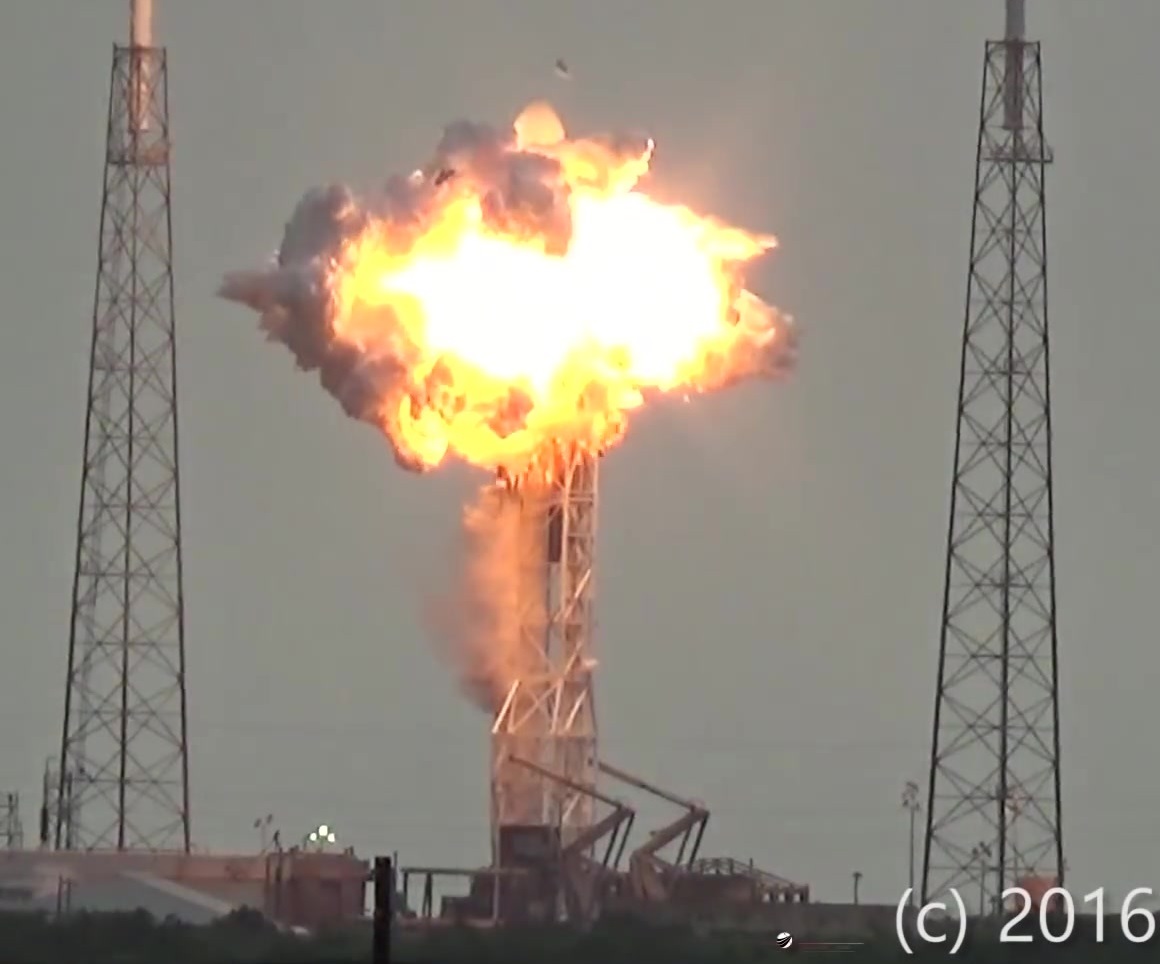Elon Musk’s SpaceX this week revealed in an anomaly update that a failure in one of the pressure vessels caused by buckling in the liquid-helium tank overwrapped with liquid oxygen was the cause of the Falcon 9 explosion that rocked the world – and Facebook – on September 1, 2016.
Facebook had wanted to use the AMOS-6 made by Israeli company Spacecom that was the Falcon 9’s payload, but the explosion destroyed the $200 million communications satellite and put paid to Facebook’s plans.
The Falcon 9 explosion was a big loss for SpaceX, and it also lost them British satellite communications company Inmarsat as a client in the process. But total orders for SpaceX now number no less than 70 missions, all of which are backlogged and will eventually account for over $10 billion in revenues for the company.
To identify the cause of the Falcon 9 explosion, SpaceX had to go through over 3,000 video channels as well as a ton of telemetry data. Essentially, what appears to have happened was that one of the composite overwrapped pressure vessels (COPVs) in a helium tank seem to have buckled. SpaceX explained this in an anomaly update:
“Although buckles were not shown to burst a COPV on their own, investigators concluded that super chilled liquid oxygen can pool in these buckles under the overwrap. When pressurized, oxygen pooled in this buckle can become trapped; in turn, breaking fibers or friction can ignite the oxygen in the overwrap, causing the COPV to fail. In addition, investigators determined that the loading temperature of the helium was cold enough to create solid oxygen, which exacerbates the possibility of oxygen becoming trapped as well as the likelihood of friction ignition.”
SpaceX has also outlined some corrective actions from the findings of the Falcon 9 explosion that will prevent this from happening in the future. This includes loading the helium in a different way and re-designing the COPV so they don’t buckle.
If the results of the investigation are approved, SpaceX will launch the Iridium Communications comm-sat payload on January 8.
Thanks for reading our work! Please bookmark 1redDrop.com to keep tabs on the hottest, most happening tech and business news from around the world. On Apple News, please favorite the 1redDrop channel to get us in your news feed.



